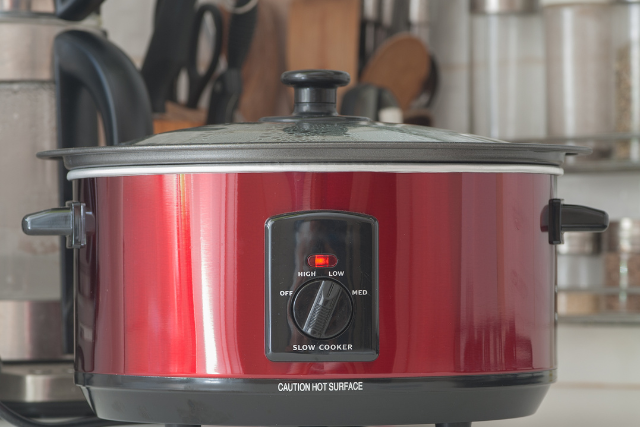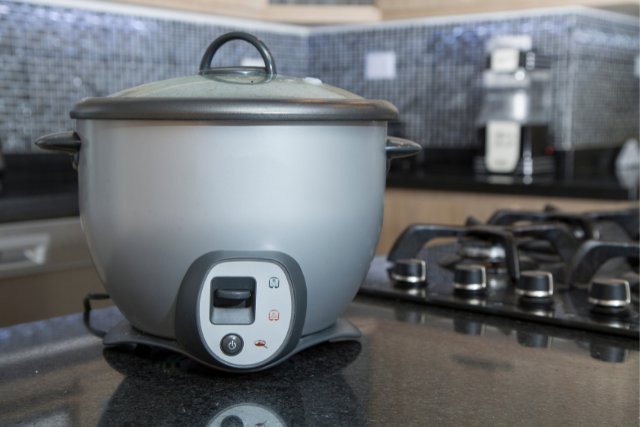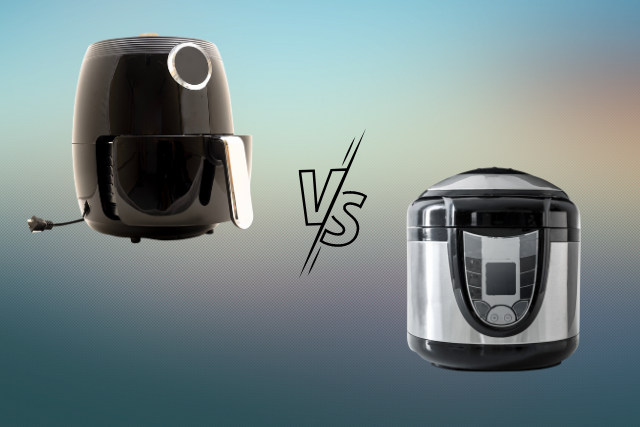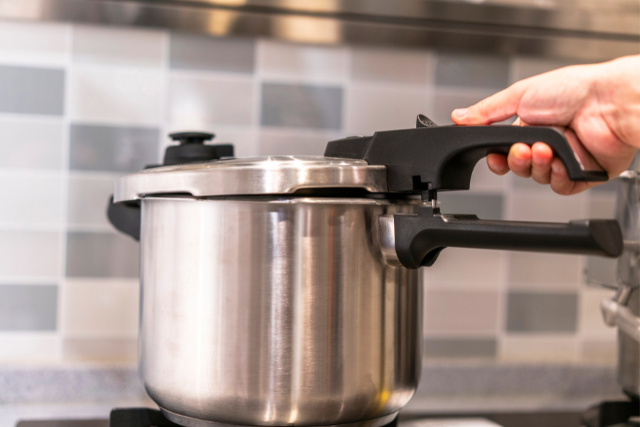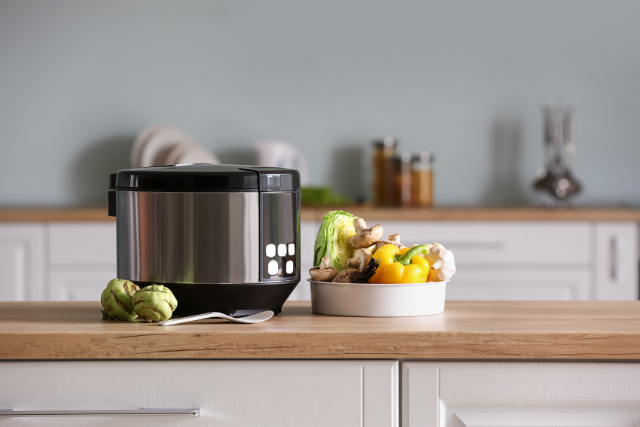The Ultimate Guide to Hard Anodized Pressure Cookers: Benefits and Features

Pressure cookers have revolutionized how we cook, making meal preparation faster, easier, and more efficient. Among the various types of pressure cookers available, hard anodized pressure cookers stand out for their exceptional performance and durability.
In this ultimate guide, we will delve into the benefits and features of hard anodized pressure cookers, shedding light on why they are popular among home cooks and professional chefs.
What are Hard Anodised Pressure Cookers?
Hard anodized pressure cookers are a type of pressure cooker made from aluminium that has undergone a process called hard anodization. This process involves treating the aluminium with an electrochemical process, which results in a layer of aluminium oxide forming on the surface. This layer is more hard, durable and corrosion-resistant than the original aluminum.
Also Read: Best Hard Anodized Pressure Cooker at Budget Price
Benefits of Hard Anodised Pressure Cookers
Here are some key features and benefits of hard anodized pressure cookers:
Durability
Hard anodized pressure cookers are known for their exceptional durability. The hard anodized surface is highly resistant to scratches and wear, making it a long-lasting option compared to regular aluminium or stainless steel pressure cookers. This means your hard anodized pressure cooker can withstand years of use without losing quality or performance.
Non-stick surface
One of the key advantages of hard anodized pressure cookers is their non-stick surface. The hard anodized layer creates a smooth and non-porous cooking surface, preventing food from sticking during cooking. This non-stick feature makes cooking more convenient and makes cleaning a breeze. Food residues are less likely to adhere to the surface, reducing excessive oil or fat needed during cooking and making the cleanup process much easier.
Even heat distribution
Hard anodized pressure cookers excel in providing even heat distribution. The anodized layer helps distribute heat evenly across the cooking surface, ensuring food is cooked uniformly. This eliminates hot spots or uneven cooking, allowing you to achieve perfectly cooked meals every time you use the pressure cooker.
Corrosion resistance
Another notable benefit of hard anodized pressure cookers is their corrosion resistance. The anodized layer creates a protective barrier on the cooker’s surface, preventing it from directly contacting corrosive elements. This makes the pressure cooker highly resistant to rust and corrosion, ensuring it remains in good condition even with regular use and exposure to moisture.
Energy efficiency
Hard anodized pressure cookers are designed to be energy-efficient. The even heat distribution and the ability to cook food faster than traditional cookware can help you save time and energy in the kitchen. By reducing the cooking time, you can significantly reduce the energy consumption required to prepare your meals, making hard anodized pressure cookers an eco-friendly choice.
Variety of options
Hard anodized pressure cookers are available in various sizes and brands, providing various options. Whether you need a smaller capacity for personal use or a larger one for family meals, a hard anodized pressure cooker suits your specific needs.
Some models also offer induction compatibility, allowing you to use them on induction cooktops. Many hard anodized pressure cookers also come equipped with additional safety features such as pressure release valves and secure locking systems, ensuring safe and worry-free cooking experiences.
These features make them a popular choice for many households. With their ability to withstand daily use, provide convenient cooking and cleaning experiences, and deliver delicious and evenly cooked meals, hard anodized pressure cookers are an excellent investment for any kitchen.
Recommended Buy:
Pigeon Titanium Hard Anodized Pressure Cooker (Read Review)
Disadvantages of hard anodized pressure cookers
While hard anodized pressure cookers offer numerous benefits, it’s important to consider some potential disadvantages:
Price
Hard anodized pressure cookers are more expensive than regular aluminium or stainless steel. The additional manufacturing process and the durability of the hard anodized surface contribute to the higher cost. However, the long-lasting nature of these pressure cookers can offset the initial investment over time.
Limited colour options
Hard anodized pressure cookers often come in dark grey or black due to the anodizing process. If you prefer a wider range of colour options to match your kitchen decor, other types of pressure cookers might provide more choices.
Non-stick coating maintenance
Although the non-stick surface of hard anodized pressure cookers makes cooking and cleaning easier, it requires proper care to maintain its non-stick properties over time. Abrasive scrubbers or harsh cleaning agents should be avoided as they can damage the anodized coating. Additionally, the non-stick surface may gradually wear off with prolonged use, requiring re-seasoning or replacement of the pressure cooker.
Heat conductivity
While hard anodized pressure cookers offer excellent heat distribution, some users may find that they heat up relatively quickly. This can be advantageous for faster cooking times but may require adjusting cooking techniques or heat settings to prevent burning or overcooking certain delicate foods.
Weight
Hard anodized pressure cookers can be slightly heavier compared to their aluminium counterparts. This might be a consideration for individuals who prefer lighter cookware or have limitations in lifting heavier objects.
Compatibility with certain utensils
The non-stick coating of hard anodized pressure cookers may not be compatible with metal utensils, which can potentially scratch or damage the surface. It is generally recommended to use silicone, plastic, or wooden utensils to maintain the integrity of the non-stick coating.
Availability
Depending on your location and preferred brand, the availability of hard anodized pressure cookers might vary. It’s essential to ensure that your desired specific model or brand is accessible in your area.
While these disadvantages exist, it’s important to note that they are relatively minor and may not significantly impact the overall performance and benefits of a hard anodized pressure cooker. Consider these factors alongside the advantages to determine if a hard anodized pressure cooker aligns with your cooking needs and preferences.
Cooking Techniques and Recipes for Hard Anodized Pressure Cookers
Hard anodized pressure cookers are versatile and can be used for various recipes and cooking techniques. Due to their non-stick surface and even heat distribution, they are particularly well-suited for the following types of dishes:
- One-pot meals: Hard anodized pressure cookers are great for cooking one-pot meals, such as stews, soups, and curries. The even heat distribution ensures that all ingredients are cooked uniformly, and the non-stick surface makes it easy to sauté ingredients without sticking.
- Rice and grains: Cooking rice, quinoa, or other grains in a hard anodized pressure cooker can yield fluffy and evenly cooked results. The non-stick surface also prevents grains from sticking to the bottom of the cooker.
- Beans and legumes: Hard anodized pressure cookers can significantly reduce the cooking time for beans and legumes, making it easier to prepare dishes like lentil soup, chickpea curry, or black bean chilli.
- Braising: The even heat distribution of hard anodized pressure cookers makes them ideal for braising meats and vegetables. The pressure cooking process helps to tenderize the meat while retaining its moisture and flavour.
- Steaming: Hard anodized pressure cookers can also be used for steaming vegetables, fish, or dumplings. The non-stick surface ensures that the food doesn’t stick to the steamer basket or the bottom of the cooker.
Here are a few recipe ideas to get you started with your hard anodized pressure cooker:
- Chicken and vegetable curry
- Risotto with mushrooms and peas
- Lentil and vegetable soup
- Beef stew with carrots and potatoes
- Steamed fish with ginger and scallions
Always follow the manufacturer’s instructions for your specific pressure cooker model, as cooking times and pressure settings may vary.
How to clean and maintain a hard anodized pressure cooker?
To ensure the longevity and performance of your hard anodized pressure cooker, here are some tips for proper cleaning and maintenance:
- Cool down before cleaning: Allow the pressure cooker to cool down naturally. Attempting to clean it while it’s still hot may lead to damage or injuries.
- Hand wash recommended: It’s generally recommended to hand wash hard anodized pressure cookers to protect the non-stick surface. Avoid using abrasive scrubbers, steel wool, or harsh cleaning agents, as they can scratch or damage the anodized coating. Instead, use a soft sponge or cloth and mild dish soap to clean the interior and exterior of the pressure cooker.
- Remove food residues: Remove any sticky particles from the pressure cooker before washing. Soaking the cooker in warm, soapy water can help loosen the debris. Then, gently scrub the surface using a soft sponge or cloth.
- Avoid acidic or alkaline cleaners: Acidic or alkaline cleaning agents can degrade the anodized coating of the pressure cooker. Stick to mild dish soap and avoid using baking soda, vinegar, or harsh chemicals.
- Handle stains carefully: If you encounter stubborn or discolouration on the surface, prepare a baking soda and water paste. Apply the paste to the stained areas and let it sit for a while. Then, gently scrub the stains with a soft sponge or cloth. Rinse thoroughly afterwards.
- Dry thoroughly: After cleaning, ensure the pressure cooker is completely dry before storing it. Excess moisture can lead to the growth of mold or mildew. Use a clean towel to dry the interior and exterior of the pressure cooker.
- Store properly: When not in use, store the pressure cooker in a dry and well-ventilated area. If possible, avoid stacking heavy objects on top of it to prevent potential damage.
- Check and maintain gaskets: Regularly inspect your pressure cooker’s gasket (rubber sealing ring) for any signs of wear or damage. Replace the gasket if necessary to maintain proper sealing and safety during cooking.
Consider the manufacturer’s instructions and recommendations for your hard anodized pressure cooker model. Following these cleaning and maintenance practices will help keep your pressure cooker in optimal condition, ensuring its longevity and preserving its non-stick properties.
Conclusion
Hard anodized pressure cookers offer many benefits and features that make them indispensable tools in the modern kitchen. From their durable construction and superior performance to their ease of use and maintenance, these pressure cookers are designed to elevate your cooking experience. Whether you’re a seasoned chef or a cooking enthusiast, investing in a hard anodized pressure cooker will revolutionize your culinary journey and open up a world of possibilities.

